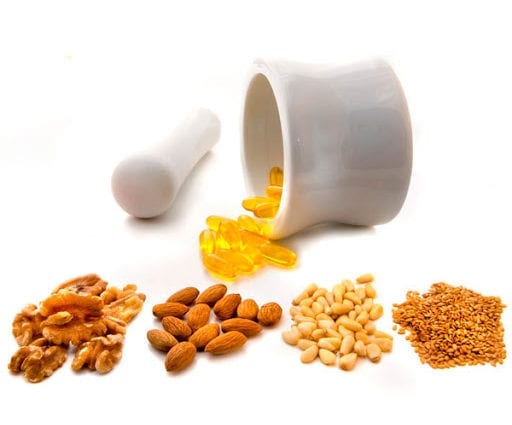General information
Essential fatty acids cannot be synthesized by the human body and enter into it only with food.
Polyunsaturated fatty acids also called omega-3 and omega-6, and the complex of vitamin F.
There are five of them: linoleic, linolenic, arachidonic, eicosapentaenoic and docosahexaenoic.
Polyunsaturated fatty acids affect the metabolism in the body, including the cellular level. Protect cells from premature aging, help to keep their genetic information. Regulate fat metabolism and activity of beneficial bacteria living in the gut.
Omega-3 and omega-6 lowers the level of cholesterol in the body and thus protect it from atherosclerosis. These fatty acids participate in the synthesis of hormone-like substances that help to lower blood pressure and reduce inflammation, thereby protecting against arthritis, sciatica, and degenerative disc disease.
Prevent blood clots and protect the heart muscle. Normalize lipid metabolism, improve vision, memory and other functions of the nervous system. In addition, polyunsaturated fatty acids enhance the action of other fat-soluble vitamins and b vitamins.
The Most of omega-3 and omega-6 is contained in vegetable oils, especially linseed, soybean, and peanut. These acids are present in other vegetable oils as well – sunflower seeds, peanuts, almonds, avocados, soy beans. A small amount of arachidonic acid is in pork fat.
In order to conserve the essential fatty acids, products of plant origin , should be consumed fresh. Heat treatment or refining destroys nutrients.
Products of animal origin, rich in essential fatty acids are: the liver of fish, fish oil and clams.
During one day a person takes about 2,5 g of fatty acids. Moreover, to maintain their optimal ratio in the body the ratio of fatty acids of vegetable and animal origin should be 4:1.
That is, the daily requirement can be satisfied with the tablespoon of Flaxseed oil or a handful of sunflower seeds, plus a portion of marine fish or seafood. Drugs with fish oil should be used in consultation with your doctor.










